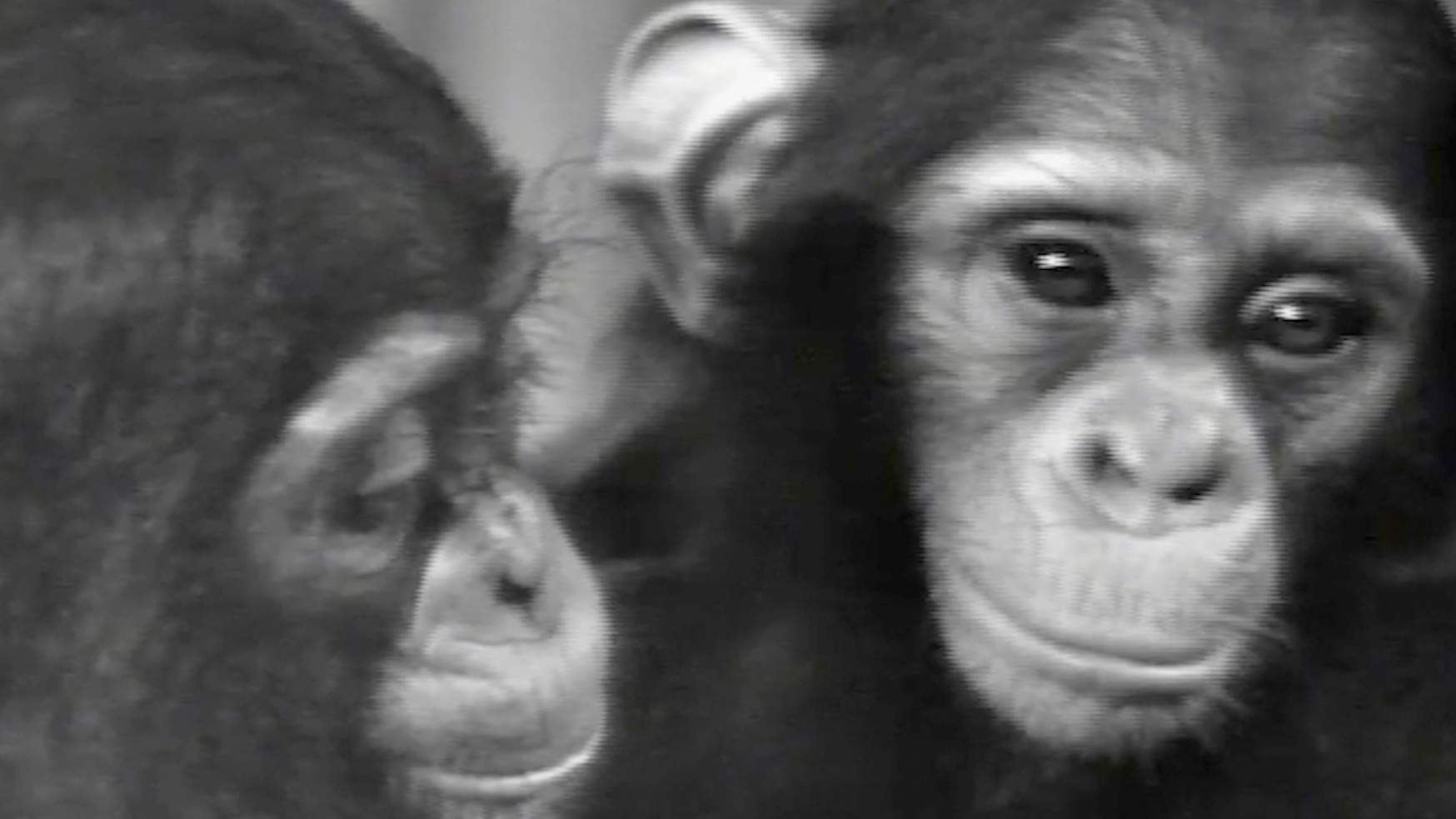
Film Summary
Rubondo: African Ark
Almost 60 years ago, a 60,000 acre island in Lake Victoria was cleared of inhabitants by the newly independent Tanzanian government and turned into an rewilded ‘African Ark’ of sorts. The man behind it, German Professor/filmmaker Berhard Grzimek, who is often credited as helping to make the modern Serengeti National Park had finally created his “Place for Wild Animals.”
A handful of animals who Grzimek considered endangered species (elephants, giraffe and rhino) were the first to be ferried over to this newly formed game preserve from across Africa. Then Grzimek, Rubondo’s Noah, set about re-habituating 17 chimpanzees from zoos and circuses in Europe to the island. These chimps were all miserable in their current conditions, had mostly never met one another, had never been to the island. On top of that, there was no habitat analysis done to find out if they would even be able to survive on the island. Damn the details! In Dr. Grzimek’s words, he was: “setting them free on Rubondo.”
The stated intention was for this massive forested island park to be a new model of a hybrid zoo/game preserve—a Great Ape Serengeti National Park. It hasn’t gone exactly according to plan.
More than 50 years later, Rubondo Island in Tanzania is arguably both the most successful wild chimpanzee colony in Africa, and possibly Grizmek’s second biggest mistake. The first was joining the Nazi Party in 1937 and lying about that throughout his entire life.
With a growing population of as many as 100 chimps living in one large troop who have developed their own distinct culture over the decades, the island has been a stunning success as far an unprecedented, wildly unprofessional rewilding experiments go. The other animals fared less well. The rhinos were all poached within five years of their arrival. The elephants and giraffe are unusual, and likely need an injection of genetic diversity, but that’s a very touchy subject and may not work.
If it’s the fastest growing troop of wild chimpanzees in Africa, why was it a mistake? The new generations of chimpanzees born on the island are reluctantly being habituated to humans, they seem fearful and suspicious. Possibly even dangerously so. Meaning no one knows exactly how many of them there are, or has had a chance to closely observe and document their recently observed behaviors. And with the chimpanzee population largely avoiding contact with humans, the island is far from an ideal tourism experience.
Who cares if tourism isn’t thriving? That's a concern because tourism is what brings in much of the money that supports the park and keeps it (and its animals) protected. The island currently hosts around 1000 visitors a year, and that was before the COVID pandemic. The small safari camps on the island have lost money since opening, because tourists who travel from far away to the island want to see the chimpanzees - but more often than not, they aren’t able to. And that doesn’t sit well with most people have having spent thousands of dollars to get there and days of trekking into the vast inhospitable forest.
So why should anyone really care about this island and the ongoing, mostly successful, highly controversial rewilding experiment? This Tanzanian National Park—the country’s least visited—operates at a significant loss, leaving Rubondo’s fate and the fate of this growing troop of wild chimpanzees who were forcibly moved there and have made it their home over the past half century, uncertain. But the fate of 100 chimpanzees isn’t the whole picture, the island and the experiment are the first of its kind at this scale. So a better understanding of how these animals managed to survive and thrive in a completely unfamiliar place with no help from humans is worthy of further study. And even more importantly than the fascinating tale of the chimpanzees who made this their home, the island national park plays a central role in the ecosystem of Lake Victoria. The protected waters around it are the vital hatcheries for the fish (mostly Nile Perch) that feed the over 8 million people who live around Lake Victoria South (LVS) basin area.
Where is Rubondo Island?
Located in the southwest corner of Lake Victoria—the largest lake in Africa—Tanzania’s Rubondo Island National Park is 28 km long and on average about five km wide. At 237 sq km, it is more than twice the size of city of Paris, and more than four times the size of Manhattan. A full three-quarters of the main island is covered with thick, Conoglese-style forests.
Including the surrounding protected waters and other islets, the total area of this Tanzanian “Jurassic Park” is over 457 square kilometers, almost eight times the size of Manhattan and more than four times the size of Paris.

Interviews Include
Production Stage
-
Shooting
We are keen to go back to the island one more time for a post-Covid in person shoot with the habituators, and a chimpanzee expert. We also ant to re-shoot two interviews that were done via Zoom during the pandemic lock down.
-

Post-Production
We are very excited about all our fantastic archival footage and still photos from the history of the island, but are waiting to finish post until after we shoot one more time on the island.
-

2025 Release
Grzimek won the 1956 audience award at the Berlinale for his film Bambuti, so our hope is to release Rubondo at the Berlinale in 2025 then license it to one of the channels / streamers here in the US for distribution.

“I was aware our project had its dangers…but I was delighted to give these chimpanzees back their freedom.”
Dr. Bernhard Grzimek
Make a donation.
If you have the means to help, we would appreciate a donation to finish the film. All donations via Empowers Africa are tax deductible. Head to our Donate page.








